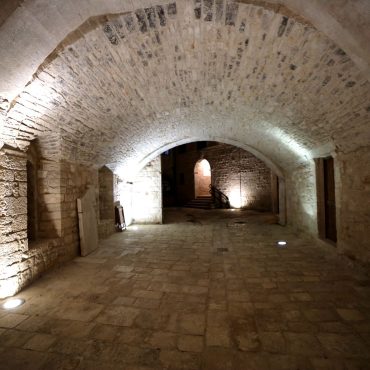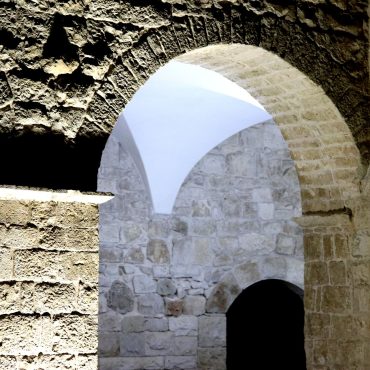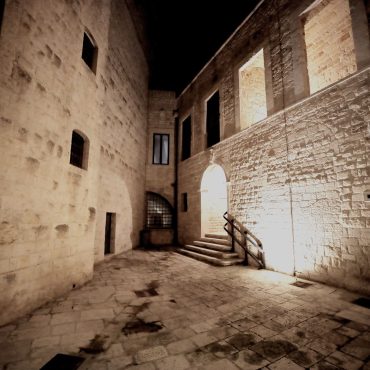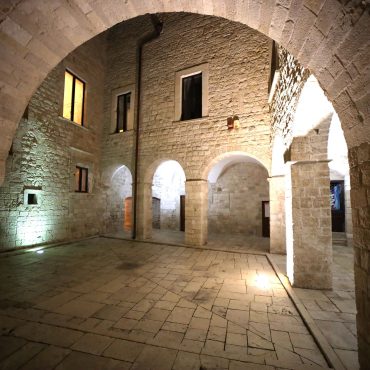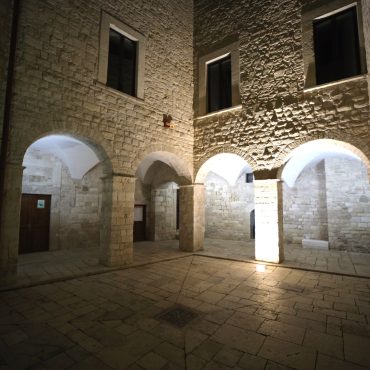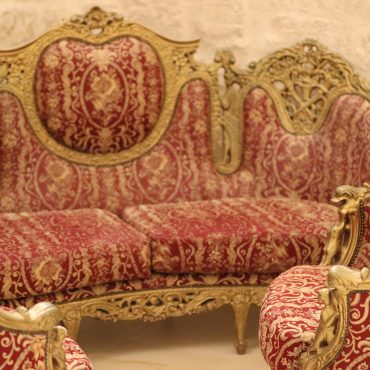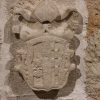
Episcopio (Bishop’s Residence)
(14th century)
In 1344, the Bishop of Giovinazzo, Giacomo II Carruba, decided to change the face of the town. With great determination, he commissioned the Bishop’s Palace, to be built above the city walls where the layout was irregular due to defensive necessities. The ambitious and complex project resulted in an imposing construction, adjacent to the cathedral, in part hidden by the new building. Giacomo II’s legacy is evident in an inscription in the atrium of the palace which remembers his work, continued over the following decades by Bishop Giustino Planca and concluded by Bishop Agnello Alfieri. The building has an irregular polygonal plan and includes a cloister and an internal courtyard giving onto a loggia. On the outside of the building is a covered terrace and a wide doorway, situated to the right of the Eastern side of the Cathedral.
Through the main entrance, a hallway gives on to a large courtyard where a stairway leads to the upper floors. Despite the apparent lack of signs of antiquity on the outside of the building, inside we can admire coats of arms commemorating many illustrious Bishops, strangely not including the coat of arms of the English monk William of Alnwick, protagonist of Umberto Eco’s famous novel “The name of the rose” nominated Bishop of Giovinazzo by King Robert of Anjou. His ministry lasted just four years (from 1329 to 1333). William was in conflict with the local clergy due to his rigid support of the Franciscan ideals of humility and poverty, a controversial theme at the time. His intransigence made him unpopular among the powerful clergymen of the town who persecuted him and forced him to leave his post prematurely.
The rooms of the Bishop’s Palace were witness to many events, among which an episode linked to the death of Bishop Paolo de Mercurio. According to his wishes, his body was mummified following ancient Egyptian techniques, thus adding a further layer of mystery to the history of this extraordinary building.
